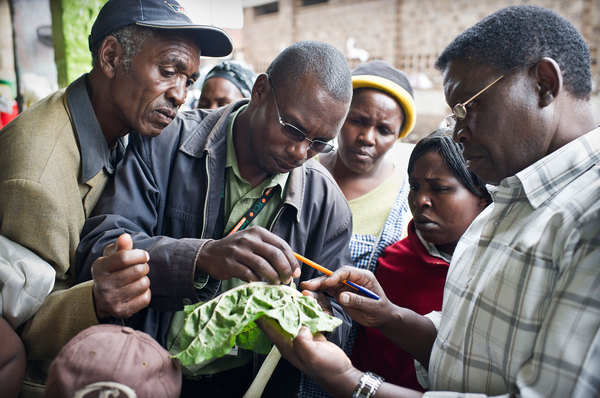Future-proofing partnerships
The recent International Congress of Plant Pathology (ICPP) in Boston brought together members of the plant health community from all over the world. Large events are a great place to forge new relationships, strengthen existing ones, or simply get everyone together in one place. The importance of working together is always emphasised when all corners…
South African ban on Kenyan avocado imports now lifted
Earlier this month, South Africa’s government announced that it is lifting the decade-long ban on Kenyan avocado imports. This will result in the return of Kenyan avocados to markets in South Africa, and pave the way for the redevelopment of Kenya’s avocado production industry at an international level.
New study shows that bacteria can be engineered to create their own fertilizer using air
Researchers have successfully engineered bacteria to use nitrogen at night to create chlorophyll for photosynthesis. This new development could reduce the need for human-made fertilizers on agricultural crops, thus reducing the cost and manpower required for fertilizer application.
Update: New Pest & Disease Records (07 August 18)
We’ve selected a few of the latest new geographic, host and species records for plant pests and diseases from CAB Abstracts. Records this fortnight include the first report of avocado sunblotch viroid (ASBVd) naturally infecting avocado in Greece, the first report of Dasheen mosaic virus infecting taro in Ethiopia and the first record of Cryptochetidae…
“Our crops have answers”
Kanyumbu village is a compact rural farming village in Lilongwe district in Malawi. Farmers in this village mostly produce maize, beans, and mangoes from a few trees scattered in their fields. In 2013, they received a new service from the Department of Agriculture; a plant clinic, with a plant doctor. They were informed that they…
Update: New Pest & Disease Records (19 July 18)
We’ve selected a few of the latest new geographic, host and species records for plant pests and diseases from CAB Abstracts. Records this fortnight include the first report of thrips from India, the description of a new species of PolycestaDejean from Chile and a report on the causal agent of leaf blight on sunflower in…
TerraSentia: the automated crop monitoring robot
A team of researchers from the University of Illinois have developed a completely automated robot capable of monitoring crops in the field during growth periods with the aim of aiding crop breeders in the extensive task of developing and comparing plant cultivars.
Environmentally Friendly Insect Repellent for Agriculture
A team of researchers from the Technical University of Munich (TUM) have developed a biodegradable agent that repels insect pest activity amongst crops without the use of insecticide chemicals.
Investing in smallholder farmers for a food-secure future
Smallholder farmers provide the vast majority of the world’s food supply, and ‘small-scale farming’ is the largest occupation group of economically active people, 43% of which are women. Approximately 2 billion of the world’s poorest live in households that depend on agriculture in some form for their livelihoods, whether this is for market or subsistence.…
Update: New Pest & Disease Records (08 June 18)
We’ve selected a few of the latest new geographic, host and species records for plant pests and diseases from CAB Abstracts. Records this fortnight include the first report of Melon necrotic spot virus in Brazil, the first report of chrysanthemum stem blight and dieback (caused by Tomato spotted wilt virus) in China and the first…




